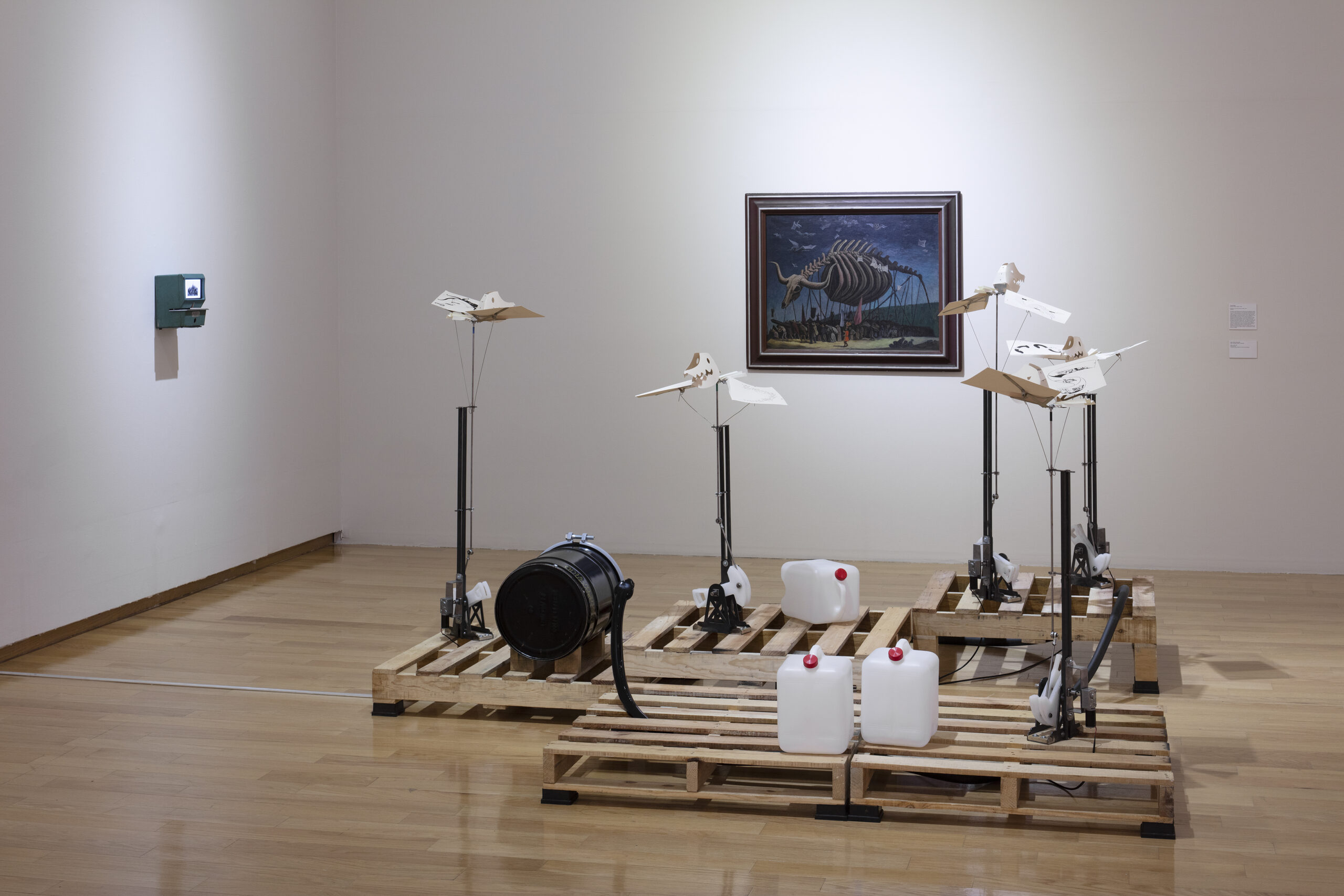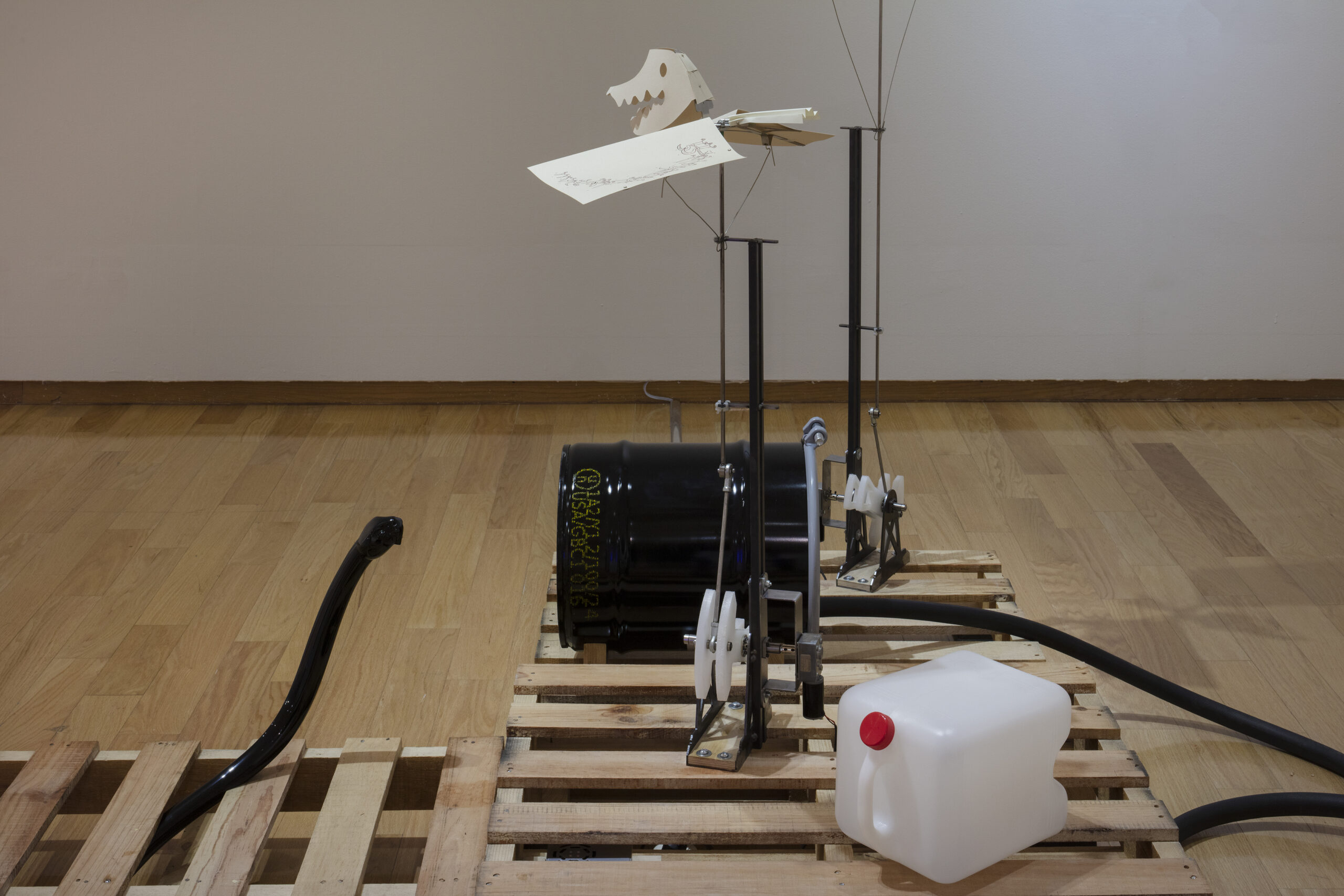Josué Mejía
(Ciudad de México, México, 1994)
Using paintings, drawings and installations, work by Josué Mejía starts out from historical revisions to analyze how narratives from the past are produced and established. He studied visual arts at the Universidad Nacional Autónoma de México’s national plastic arts school and was part of the 2020 graduating class at the Programa Educativa SOMA. His work has shown at solo exhibitions in Mexico at spaces including Proyectos Monclova, in 2023; at the Museo Jumex as well as guadalajara90210, both in 2022. Two 2023 exhibitions—at the Sala de Arte Público Siqueiros, alongside participation in the 22nd Bienal de Arte Contemporânea Sesc_Videobrasil, in São Paulo—in addition to a 2021 show at the SCAD Museum of Art in Savannah, South Carolina; as well as another at Mexico City’s Museo Tamayo Arte Contemporáneo figured among the artist’s most notable recent collective exhibitions. He received two Jóvenes Creadores grants from Mexico’s Fondo Nacional para la Cultura y las Artes in 2018 and 2021.
Presagios en vuelo sobre pisos de madera, 2024
Installation
Metal, drawing on paper, wood, steel, hose, plastic, 3D resin printing, and clock modified using animation
Josué Mejía’s work explores the visual imagination of modernity, turning to emblematic artists of modern art and representations in the media. In this piece, he animates the painting México negro (1942) by Guanajuato artist José Chávez Morado, as a harbinger of the industrial future of Bajío and Mexico. He focuses on two of the primary elements of the painting. An ox skeleton, the main character of an animated video, is housed inside a clock—a representation of the workday. The narrative follows the creature as it drinks a black liquid (a reference to the petroleum derivatives produced in Salamanca) until it is reduced to bones. The other element contains flying paintings (set in motion mechanically) that bear caricatures exploring industrial oil and automotive manufacturing processes on their wings. The set explores the anthropomorphic possibilities of machines and factories while commenting on production in relation to time, automation, and labor.
bienal



